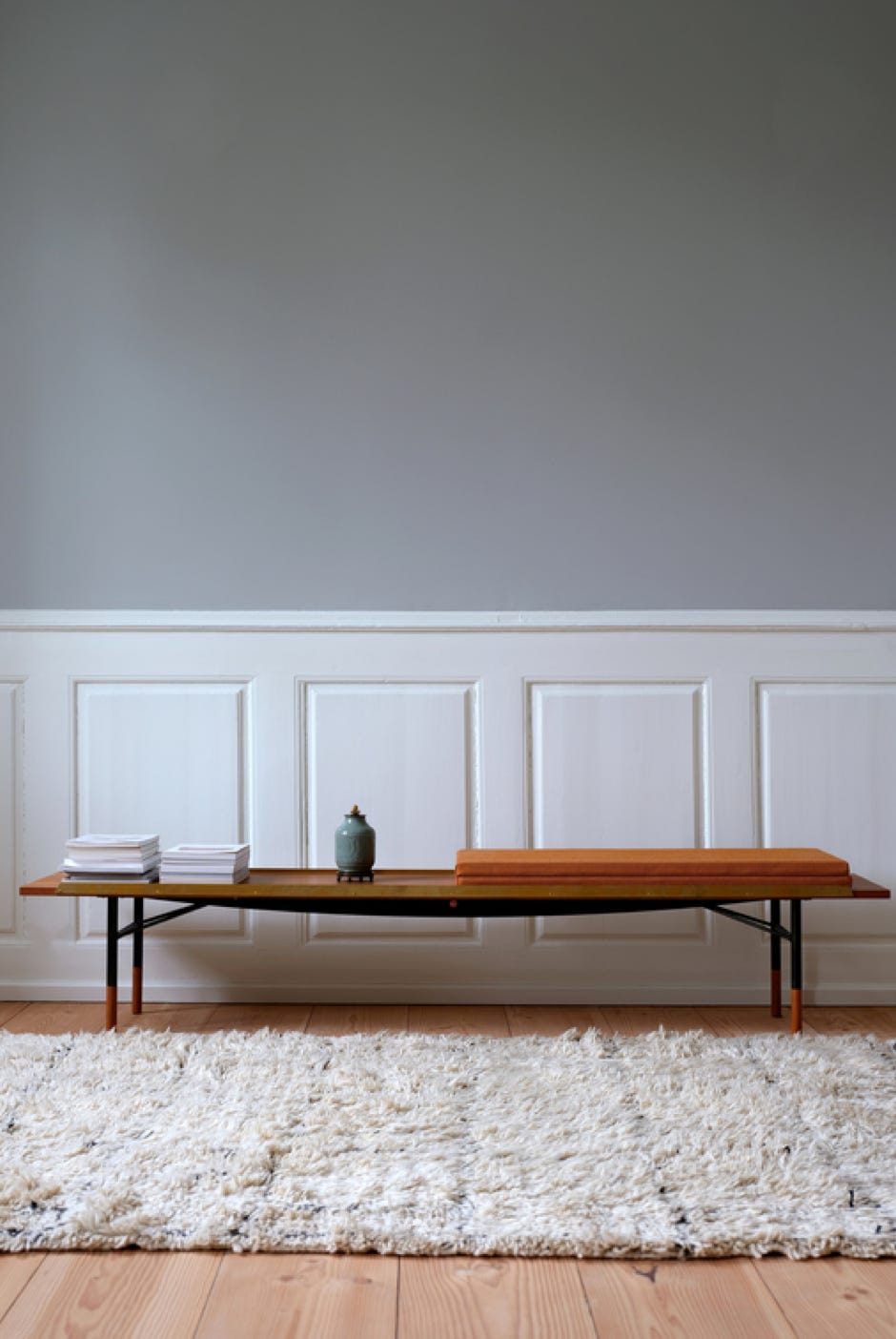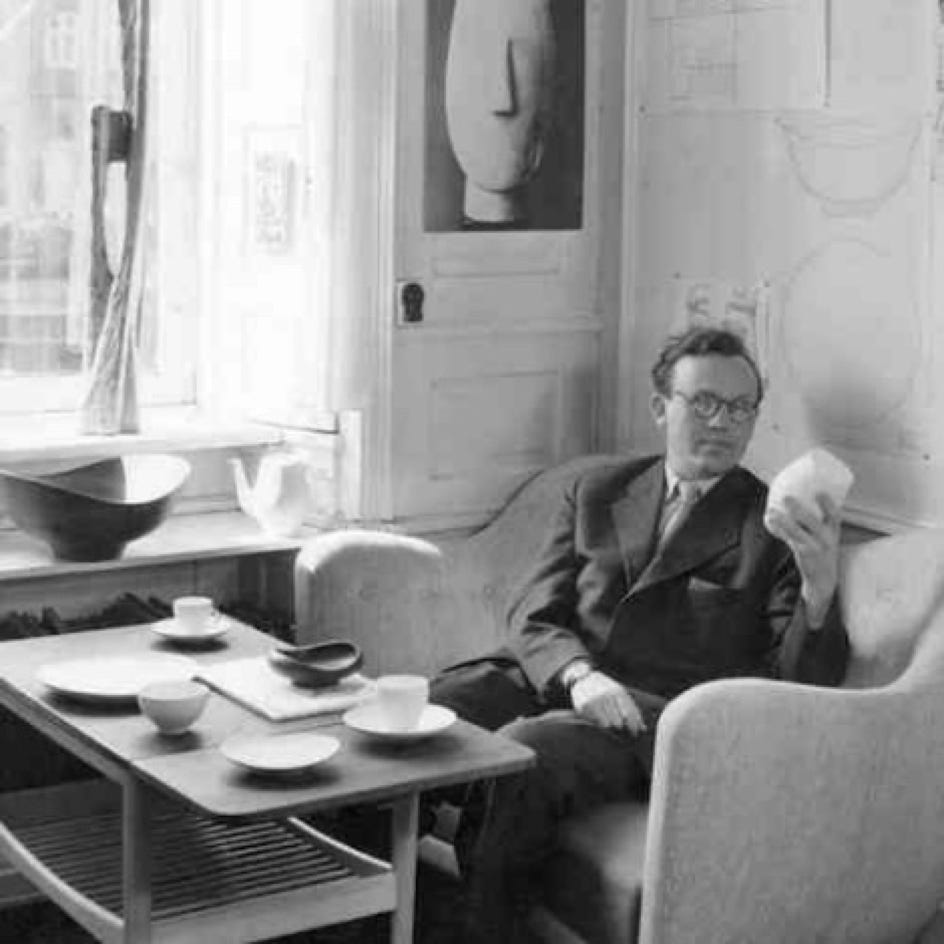15% off with DESIGN15


The bench table is an elegant and sophisticated piece with a timeless design and contrasting textures. Versatile, it can be used for many purposes around the home. As a coffee table, it can be used in a living room to display books and decorative works of art. With two solid brass strips holding a folding cushion in place, it can be used as a bench in a hallway or bedroom. Folding the cushion leaves space for personal items next to the seating area.
The bench table is one of Finn Juhl's most popular pieces, achieving extremely high prices at auctions around the world.
Finn Juhl made his international breakthrough in the United States in the early 1950s. He designed a range of furniture with tubular steel frames, inspired by the American designers he had met. The bench table is part of the furniture range from this period and was also included in the large-scale exhibition Design in Scandinavia. The exhibition, curated by Finn Juhl himself, toured 22 cities in North America between 1954 and 1957 and was visited by around 650,000 people.
The bench table is available in many different versions, just as Juhl intended. It comes in three different lengths and can be ordered in oak or walnut (also available on request in teak and Oregon pine: please contact us), with or without black linoleum.
The legs are either burnished steel or painted black, orange or light blue. Finally, the bench can be customised with or without matt polished brass edges to accommodate an optional folding padded cushion.
Without brass edge
112 x 45 x H39 cm
Without brass edge
170 x 45 x H39 cm
Without brass edge
225 x 45 x H39 cm
With brass edges
112 x 45 x H39 cm
With brass edges
170 x 45 x H39 cm
With brass edges
225 x 45 x H39 cm
light oiled oak / black
dark oiled oak / light blue
dark oiled oak / orange
walnut / black
walnut / light blue
walnut / orange
walnut / black linoleum / black
Dark oiled oak / Black
Dark oiled oak / Black linoleum / Black
Orange + Dark oiled oak + Linoleum
Orange + Walnut + Black Linoleum
Orange + Light oiled oak
Orange + Light oiled oak + Linoleum
folding cushion
Cushion for L112 cm
from
Cushion for L170 cm
from
Cushion for L225 cm
from

As a teenager, Finn Juhl (1912-1989) wanted to become an art historian after having been fascinated by fine arts since childhood. His father prevented him from doing so and he studied architecture. Later, once his reputation as a furniture designer had been acquired, he would speak of himself as a self-taught man, certainly in reference to this thwarted vocation which forced him to make his intellectual journey alone. His very singular style owes much to this non-linear trajectory, with a very unacademic interpretation of art visible in his work. Finn Juhl began his studies in 1930, a key period that saw the birth of modern design and furniture.
His ultra-modern offices in the center of Copenhagen greeted visitors with a huge Japanese paper fish, a symbol of imagination. And rather than approaching furniture design from a functional, classical perspective, Finn Juhl approached his work as a sculptor. He sought beauty in volume and form, life and expressiveness. An approach that in the 1940's and 1950's was totally unprecedented. For Finn Juhl, it was clear that a piece of furniture could not be limited to a function, but also had to express an artistic sensibility.
While he remains world-famous for his furniture, Finn Juhl also designed several interior architecture projects and a few industrial products, including IBM typewriters. His greatest commercial success was with the Baker Company in the United States, which allowed him to mass-produce several pieces of furniture.
As an architect, he is known for the interior design of the United Nations Council in New York.